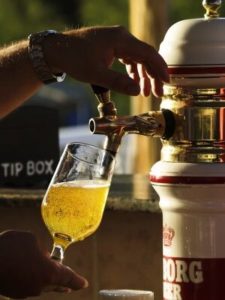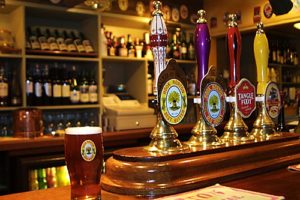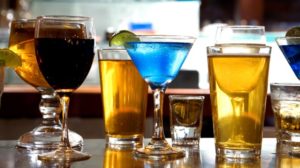 Today’s consumers have a complex relationship with alcohol and brands depending on the occasion, their own self-image, or the place they drink. The rules of consumption have changed making the certainties of the past less relevant for alcohol marketers. To try and uncover the new rules for alcohol marketing, Maxus has created a report, called ‘The Drinking Code’, which analyses the attitudes of 6,500 adults across Australia, China, Germany, India, the UK and the US, investigating why, how and when people drink and what these changing patterns of behaviour mean for alcohol marketing.
Today’s consumers have a complex relationship with alcohol and brands depending on the occasion, their own self-image, or the place they drink. The rules of consumption have changed making the certainties of the past less relevant for alcohol marketers. To try and uncover the new rules for alcohol marketing, Maxus has created a report, called ‘The Drinking Code’, which analyses the attitudes of 6,500 adults across Australia, China, Germany, India, the UK and the US, investigating why, how and when people drink and what these changing patterns of behaviour mean for alcohol marketing.
Through in-depth qualitative and quantitative questioning, ‘The Drinking Code’ uncovered consumers’ relationship with alcohol brands and the role alcohol plays in their lives. In doing so it uncovered seven key consumer trends that shape how marketers need to look at this fragmented and complex sector. The seven consumer states:
- Self-controlled
- Rewarding
- Acceptance
- Individuality
- Recommendations
- Special moments
- Inspiration
 Globally people like to drink and they like the taste of alcohol (86%). Perhaps surprisingly given their hard-drinking reputation a third (30%) of young Australians (aged under 35) said they did not like the taste.
Globally people like to drink and they like the taste of alcohol (86%). Perhaps surprisingly given their hard-drinking reputation a third (30%) of young Australians (aged under 35) said they did not like the taste.
Moderation, responsibility and self-control are widespread and on-trend when it comes to alcohol consumption. Worldwide over three quarters of consumers (78%) agree that it is important for people to drink alcohol in moderation – this sentiment is valid irrespective of age, gender or country of origin. Furthermore over a third of people said alcohol is only for special occasions, this sentiment is highest in China with 42% believing this and lowest in the UK with only 22% keeping a drink for special occasions.
In addition to sticking with preferred brands, price impacts on beverage selection in certain markets with the UK and Australian drinkers considering cost to be a factor in drink choice, a third of UK consumers consider price to be important and so do almost half of Australians (47%). However in contrast 64% of Germans are willing to pay more for a higher quality beverage.
Alcohol plays an important role in helping today’s consumers to relax and combat the stresses and strains of everyday life. Although social drinking continues to be very popular, the number one alcohol occasion is ‘having a casual drink at home’ (globally 54% of adults do this at least weekly and 80% monthly). This occurs more than twice as often as any other type of occasion and tops the list across all types of consumers, irrespective of age or gender. 64% of consumers say they do this to relax.
 Consumers want trusted recommendations – Consumers are creatures of habit when it comes to their alcohol choices, with nearly two thirds of consumers (62%) sticking to one / a couple of their favourite alcoholic drinks brands at all times, and, on average, they are only drinking three different types of alcohol on a weekly basis. The desire for familiarity, reliability and predictability trumps the desire for experimentation. The outcome of trying new alcoholic beverages is unknown and the fear of “losing out” (ruining a special moment), is stronger than the pull of a potential gain. Recommendation, either explicit or implicit, from trusted sources, provides reassurance and confidence for exploration. Consumers are actively seeking the opinions of other “everyday people”, who they perceive to be “like them”.
Consumers want trusted recommendations – Consumers are creatures of habit when it comes to their alcohol choices, with nearly two thirds of consumers (62%) sticking to one / a couple of their favourite alcoholic drinks brands at all times, and, on average, they are only drinking three different types of alcohol on a weekly basis. The desire for familiarity, reliability and predictability trumps the desire for experimentation. The outcome of trying new alcoholic beverages is unknown and the fear of “losing out” (ruining a special moment), is stronger than the pull of a potential gain. Recommendation, either explicit or implicit, from trusted sources, provides reassurance and confidence for exploration. Consumers are actively seeking the opinions of other “everyday people”, who they perceive to be “like them”.
From a country perspective the Germans are the most habitual, with the urban Chinese consumers being the least (72% vs 57% agree respectively).
Special moments – it is a global truth that people are central to any meaningful alcohol occasion, creating the right atmosphere. The two factors are intrinsically linked and nearly three quarters of consumers placed both friends/family and atmosphere/mood as being in their top three key ingredients for a great occasion (72% each), with friends and family coming out top as the number one factor (37% vs 30% for atmosphere/mood). The next most important factors are the presence of food (38% in top 3), location (31%), time of day / day of week (26%) music (19%). One key differential concerns the presence of music, which is significantly more important for the under 35’s. Younger consumers told us that the right sort of music is vital in enhancing the mood of an occasion and “brings good vibes”.
 Inspiration – the most frequent drinking occasions are at home with 47% enjoying a drink before a night out, and similar percentages having monthly social occasions at home (47%) and informal family gatherings (%). People like ritual in their drinking experience and this raises an interesting opportunity for marketers around the off-trade to create meaningful brand experiences that move beyond the traditional price/value proposition.
Inspiration – the most frequent drinking occasions are at home with 47% enjoying a drink before a night out, and similar percentages having monthly social occasions at home (47%) and informal family gatherings (%). People like ritual in their drinking experience and this raises an interesting opportunity for marketers around the off-trade to create meaningful brand experiences that move beyond the traditional price/value proposition.
Acceptance – alcohol choices and consumption can be tribal in nature especially as young adults hit the legal drinking age and move away from home. This exciting time can lead to an overwhelming desire to fit in as they experience their new found independence. At this time they are faced with other lifestyle changes such as moving out of the family home and starting work. 44% of young people find the choice of alcohol overwhelming but over 51% like to experiment with new drinks. However, 43% of younger global consumers said that alcohol was only for special occasions (but only 27% of UK young adults). They do seem to have more special occasions with 3.4 drinking occasions a week as opposed to 1.7 for older consumers.
As you might expect, with this age group, cost is a primary consideration in almost half (48%) of young people’s drinks choice, but they still want quality, 56% are prepared to pay more for a higher quality drink.
Alcohol choices are partly about expressing individuality, personal tastes and self-expression. By their mid-20s consumers are more confident in their identity – this is reflected in their approach to alcohol.
 Our consumers talked about these years as those in which they came into their own as adults. They typically have more money in their pockets, alcohol occasions are still frequent but more focused on bonding and intimacy with friends/partners rather than fitting in, the quality and taste of alcohol is more important compared to price or what those around you are drinking, the type of venue changes to something a little more ‘refined’ in a bid to avoid the younger tribes, and matching food choices is more common.
Our consumers talked about these years as those in which they came into their own as adults. They typically have more money in their pockets, alcohol occasions are still frequent but more focused on bonding and intimacy with friends/partners rather than fitting in, the quality and taste of alcohol is more important compared to price or what those around you are drinking, the type of venue changes to something a little more ‘refined’ in a bid to avoid the younger tribes, and matching food choices is more common.
These are also the years where consumers feel more personally empowered to explore alcohol options and this can result in new alcohol choices and habits being formed that last for many years, if not indefinitely in some cases. Experimentation is driven by higher confidence, palate refinement, personal values, authenticity, unique preferences and a sense of self. It is also crucial that any alcohol beverage is truly enjoyed. They will quickly drop specific drinks if they no longer reflect them as a person or are perceived to be sub-standard.
Nick Vale, global head of planning at Maxus, comments: “Over the last few years there have been wholesale changes in alcohol consumption patterns, and we’re seeing the same trends globally. Consumers are creating new rituals and occasions. This may be a new golden age for alcohol brands in many ways, but they also have to understand the changes in how, why and when people drink. Drinks makers often focus on things like habit, heritage and tradition, but at the same time they often want us to try something new. However, as consumers moderate their drinking habits, they are tending to prioritise favourite brands and ‘experience’ over cost factors – something for drinks makers to be aware of, particularly when pushing new variants.”

You must be logged in to post a comment Login